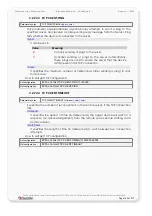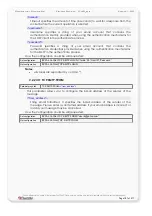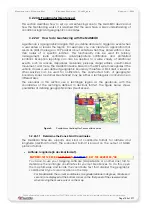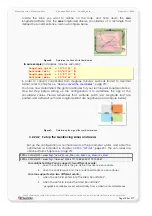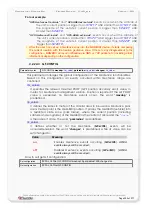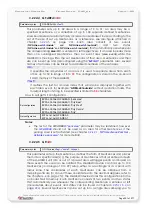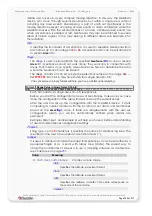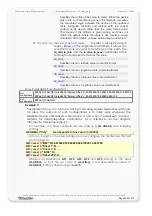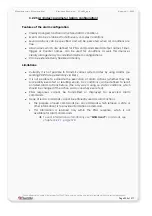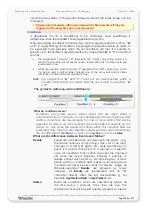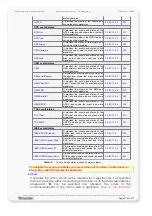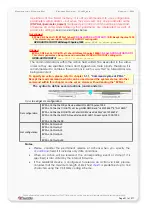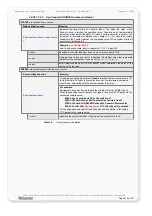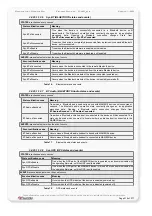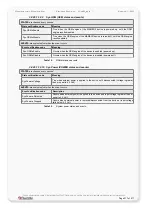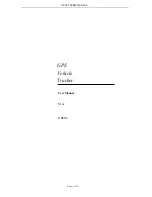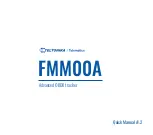
C
ONFIGURATION
C
OMMAND
S
ET
- F
IRMWARE
R
EVISION
2.4.0_
BETA
-
V
ERSION
1.0.0
define and cover up a very complex moving direction. In this way, the MAMBOII
device can move through several GeoFences, but within a single area, without
occurring any area events. Overlapping a part of each set GeoFences in the
moving direction prevent occurring of area events or alarm notification while the
MAMBOII moves within the set GeoFences of an area., otherwise area events rise
when a GeoFence is entered or left. GeoFences may also be attached to several
areas (if certain regions in the map belong to different areas, see Example 2 for
more details).
<
ID
>
It specifies the ID-number of a GeoFence. It is used to separate GeoFences from
each other. Up to 100 in range of
0
to
99.
A GeoFence<ID> can be set/attached
to several
Area
<
flag
>
The
is used to place/attach the specified
Geofence<
to one or several
Area
>. GeoFences could not work alone; they work only in connection with
areas. That means, if you specify a GeoFence you have to determine the area
where the Geofence has to be placed.
The
consists of a 32 bit (4 byte) hexadecimal number in the range
0x
0
…
0x
FFFFFFFF
.
Each bit in this value stands for a single area (
0 – 31
).
The conversion to binary format will help you have a better understanding:
Format
Range Value in binary format (32-bit)
BIN
0
000 0000 0000 0000 0000 0000 0000 0000 … 1111 1111 1111 1111 1111 1111 1111 1111
Each bit consists of a single area (
0 – 31
) respectively.
Before you start the configuration process of GeoFences, make sure you have
done the configuration of the areas that will cover up these GeoFences.
After the user has set up the configuration into the MAMBOII device, it starts
comparing its current location with the location of set areas and GeoFences
based on the
area<
value. If there are disagreements with the user set
configuration alarm, you will be automatically notified when alarms are
executed.
Examples (Example 1 and Example 2
will help you have a better understanding
of areas and GeoFences configuration settings.
<”
name”
>
String type, up to
30
characters, it specifies the name of a Geofencing zone. The
specified name must be wrapped in quotation marks (" ").
<
shape
>
It is used to define and create the shape for GeoFences. It can be set either as a
square/rectangle or as a point with radius zone (circle). The easiest way to
obtain the coordinates of shapes is to use a mapping software. as a reference,
see chapter
on page
Value
Meaning
C
, <
Creates a circle shape.
<
lat
>
Specifies the latitude, in decimal format.
<
lon
>
Specifies the latitude, in decimal format.
<
alt
>
Specifies the latitude, in meter. This value corresponds to
the centre of the set circle.
<
radius
>
This confidential document is a property of FALCOM and may not be copied or circulated without previous permission.
Page 202 of 271






